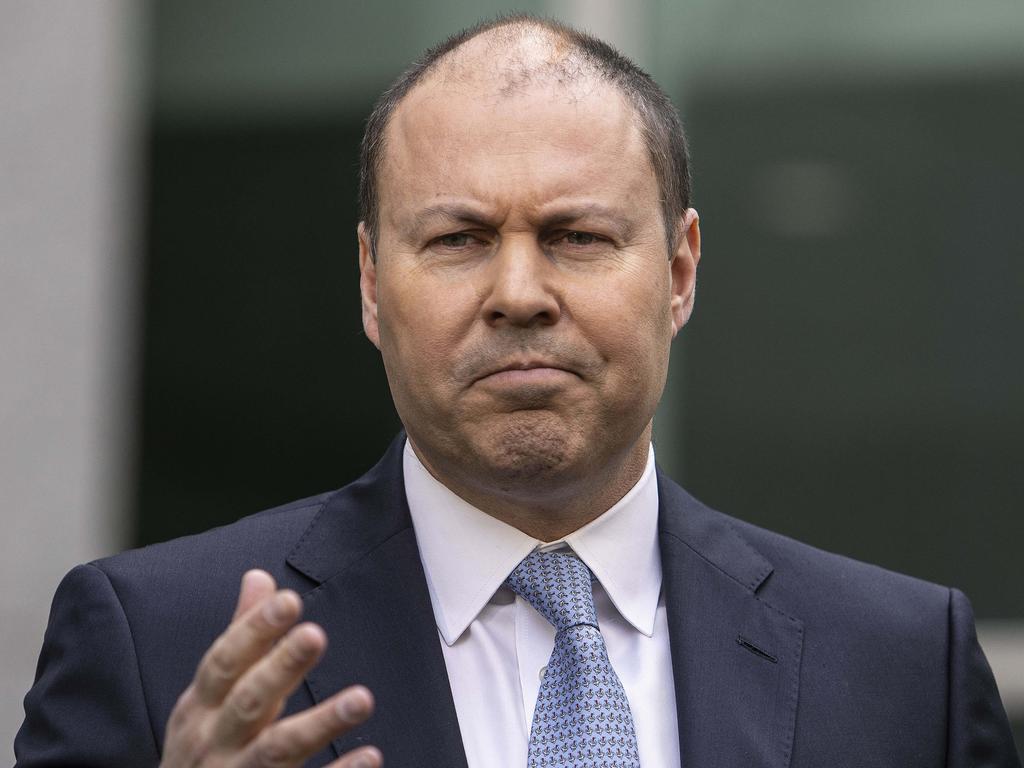‘Challenging’: Australia’s $85.3bn deficit
The staggering cost of the coronavirus pandemic has been revealed with the government releasing its cost to the budget bottom line.
Australia’s deficit has been cemented at $85.3 billion for 2019-20 following the blow from coronavirus.
Treasurer Josh Frydenberg confirmed the eye-watering figures in his final budget position ahead of the October 6 federal budget.
The $5 billion forecast surplus became a deficit the size of 4.3 per cent of GDP.
“This is a half a billion improvement from what was estimated in terms of the deficit, but a $93 billion deterioration forecast at the end of the last year,” Mr Frydenberg said.
“The hit to GDP has been enormous … the hole in the Australian economy is significant.
“But we have performed so much better than nearly every other nation in the world.
Real GDP fell 0.2 per cent 2019-20.
Net debt increased to $491.2 billion, up from $488.2 billion at the July economic update.
It now stands at 24.8 per cent of GDP, or 34.5 per cent of GST in 2019-20.
“These increases in debt levels reflect increased borrowing, due to the impact of our policy responses to the COVID pandemic,” he said.
“Australia’s debt levels remain lower than many comparable nations, with the average net debt to GDP ratio for advanced economies expected this year to be around 100 per cent.”

Total cash receipts were also $33.1 billion lower and tax receipts were $32 billion lower than estimated after economic activity slowed during coronavirus restrictions.
Mr Frydenberg said GST receipts were down and customs and excises duties were also $2.2 billion lower, reflecting lower tobacco and petrol consumption.
The unemployment rate was 7 per cent in the June quarter, compared to 5.25 per cent forecast at the Mid-Year Economic and Fiscal Outlook.
Finance Minister Mathias Cormann said this was a “challenging set of numbers”.
“We’re here because of the cost of the fiscal support, we necessarily had to provide to our health system to the economy, to businesses, to working Australians and to those Australians who lost their job through no fault of their own, as a result of this pandemic,” Senator Cormann said.
“We want to facilitate the strongest possible economic and jobs recovery, which will also help repair the budget again.
“The budget on October 6 will provide the next instalment of our plan to help ensure that happens.”
Senator Cormann said as restrictions are eased the economic and jobs recovery from coronavirus will in itself help to repair the budget bottom line.
Mr Frydenberg said the budget may include bringing forward infrastructure spending or encouraging business investments.
He said changes announced this week about responsible lending laws and insolvency reforms both would not hit the budget bottom line but would help create jobs and be “an important part of our recovery”.
“The speed of our economic recovery will depend on our success as a nation in managing COVID,” he said.
“This is not easy. It has affected consumer confidence, it’s affected business confidence, there’s obviously been extensive new expenditures, particularly as more people have been unemployed.
“If we get the environment in Australia to be COVIDSafe and we’re able to successfully manage new cases, then our economic recovery will continue to head in the right direction.”




